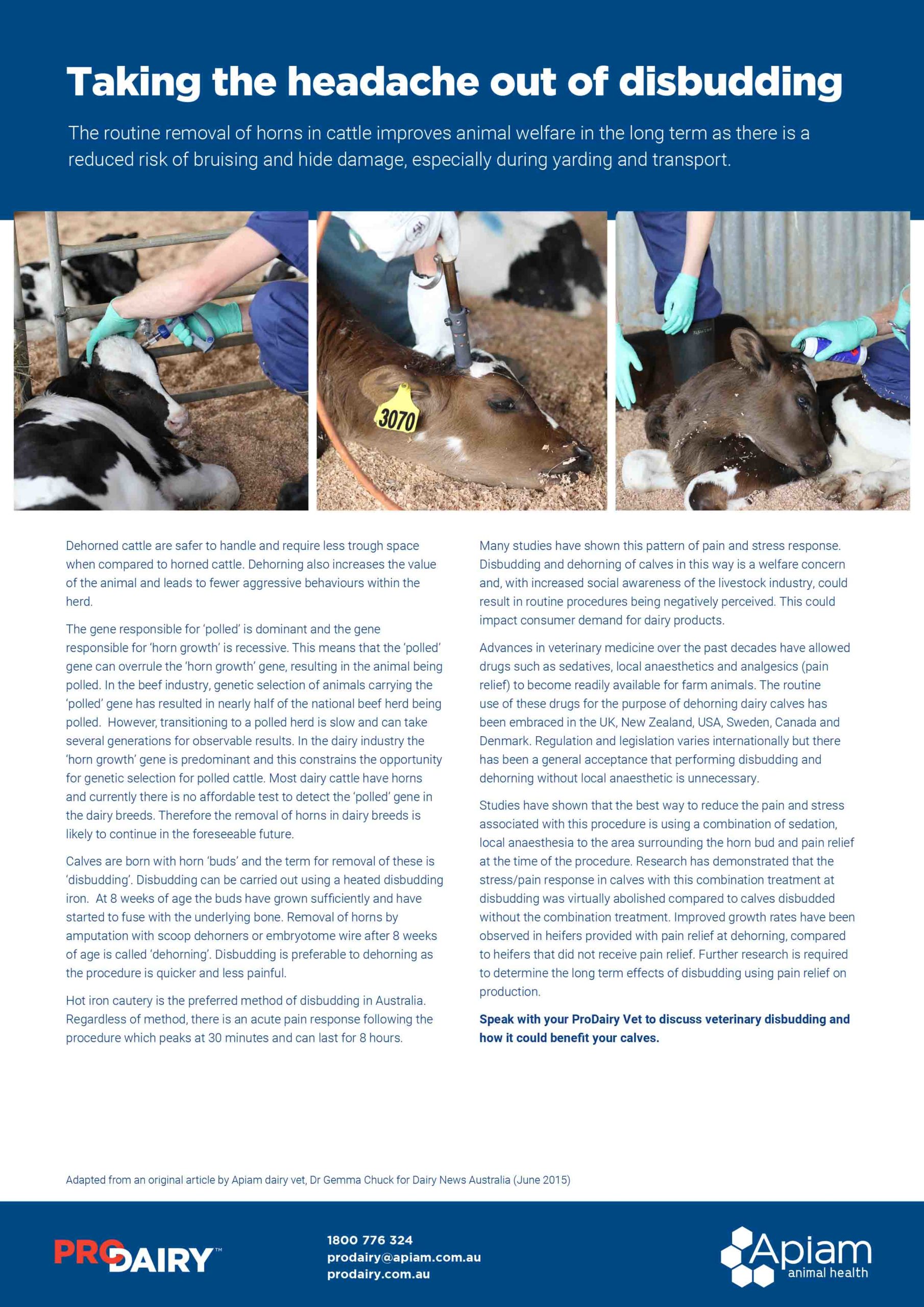The routine removal of horns in cattle improves animal welfare in the long term as there is a reduced risk of bruising and hide damage, especially during yarding and transport.



Dehorned cattle are safer to handle and require less trough space when compared to horned cattle. Dehorning also increases the value of the animal and leads to fewer aggressive behaviours within the herd.
The gene responsible for ‘polled’ is dominant and the gene responsible for ‘horn growth’ is recessive. This means that the ‘polled’ gene can overrule the ‘horn growth’ gene, resulting in the animal being polled. In the beef industry, genetic selection of animals carrying the ‘polled’ gene has resulted in nearly half of the national beef herd being polled. However, transitioning to a polled herd is slow and can take several generations for observable results. In the dairy industry the ‘horn growth’ gene is predominant and this constrains the opportunity for genetic selection for polled cattle. Most dairy cattle have horns and currently there is no affordable test to detect the ‘polled’ gene in the dairy breeds. Therefore the removal of horns in dairy breeds is likely to continue in the foreseeable future.
Calves are born with horn ‘buds’ and the term for removal of these is ‘disbudding’. Disbudding can be carried out using a heated disbudding iron. At 8 weeks of age the buds have grown sufficiently and have started to fuse with the underlying bone. Removal of horns by amputation with scoop dehorners or embryotome wire after 8 weeks of age is called ‘dehorning’. Disbudding is preferable to dehorning as the procedure is quicker and less painful.
Hot iron cautery is the preferred method of disbudding in Australia. Regardless of method, there is an acute pain response following the procedure which peaks at 30 minutes and can last for 8 hours.
Many studies have shown this pattern of pain and stress response. Disbudding and dehorning of calves in this way is a welfare concern and, with increased social awareness of the livestock industry, could result in routine procedures being negatively perceived. This could impact consumer demand for dairy products.
Advances in veterinary medicine over the past decades have allowed drugs such as sedatives, local anaesthetics and analgesics (pain relief) to become readily available for farm animals. The routine use of these drugs for the purpose of dehorning dairy calves has been embraced in the UK, New Zealand, USA, Sweden, Canada and Denmark. Regulation and legislation varies internationally but there has been a general acceptance that performing disbudding and dehorning without local anaesthetic is unnecessary.
Studies have shown that the best way to reduce the pain and stress associated with this procedure is using a combination of sedation, local anaesthesia to the area surrounding the horn bud and pain relief at the time of the procedure. Research has demonstrated that the stress/pain response in calves with this combination treatment at disbudding was virtually abolished compared to calves disbudded without the combination treatment. Improved growth rates have been observed in heifers provided with pain relief at dehorning, compared to heifers that did not receive pain relief. Further research is required to determine the long term effects of disbudding using pain relief on production.
